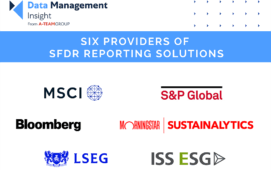Numerix, a provider of cross-asset analytics for derivatives valuations and risk management, today announced that Alan Brace, co-developer of the BGM model, has joined the Numerix quantitative advisory board.
Brace is a co-author of the Brace-Gatarek-Musiela (BGM) model, also known as the Libor market model (LMM), which was proposed in a paper “The market model of interest rate dynamics” published in 1997. The BGM model represents the standard widely used in the market for pricing, calibrating and hedging interest rate derivatives. Brace is also an adjunct professor at The University of Technology, Sydney (UTS) and a senior quantitative analyst in market risk at National Australia Bank (NAB).
“I would like to personally welcome Brace as a member of the advisory board,” said Steven O’Hanlon, president and COO at Numerix. “Through our strategic positioning in the industry, Numerix has been able to work closely with some of the most progressive leaders in quantitative research in the largest financial institutions globally. To have Brace join the Advisory Board is an honour and a privilege.”
“The quantitative research that Brace has done is truly groundbreaking,” said Serguei Issakov, senior vice president of quantitative research and development at Numerix. “The Libor market model introduced a new concept into the modelling of interest rate derivatives. It models the dynamics of the Libor rates that are directly observable in the market – which explains the modern name of the model – as opposed to instantaneous rates, which had been used before, which are not directly observable and can be related to the market rates only approximately, in a certain limit. Operating with observable rates makes the dynamics of the model as well as the calibration of the model (determination of the parameters of the model from market data) more accurate and also makes interpretation of the results more transparent and intuitive. The idea of market models proved to be very powerful and has since been extended to other asset classes, such as inflation and commodities. We look forward to having Brace as a member of the advisory board.”
“It is a tremendous honour to be named as a member of the advisory board,” said Brace. “Our board mandate will be one that is designed to further the quantitative model transparency and understanding that is needed in today’s global OTC derivatives markets and to also facilitate the increased interaction among academics and industry professionals.”
Brace goes on to say, “Numerix is the kind of financial software package that most users can benefit from. As well as providing traditional models, it contains many models close to the cutting edge on which consensus has been reached, bugs ironed out, and calibration issues sorted. So for example, UTS students in the Masters of Quantitative Finance degree program where Numerix is used, can not only practice on industrial strength software, but are also assured of a disciplined framework in which to learn the mathematics of appropriate and up-to-date models.”
Brace represents the first member to be appointed to the Numerix quantitative advisory board. The advisory board creates an industry leadership forum comprised of the “top professional minds” from quantitative research across the academic and financial services industry at large. The advisory board will also seek to promote professional interaction between renowned academics, researchers and Numerix.
Numerix provides the industry’s most sophisticated cross asset pricing platform for traders, quants and risk managers of derivatives and structured products. Numerix allows users to structure complex derivatives using a proprietary scripting language and price them using a wide range of model and calibration options.
Subscribe to our newsletter




